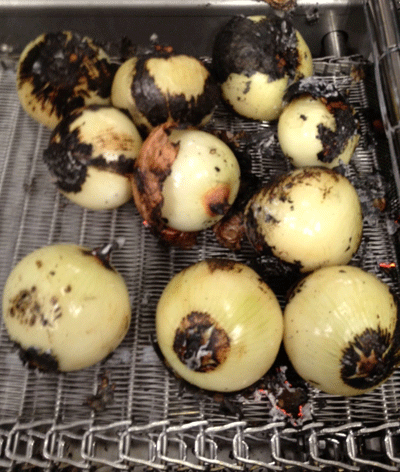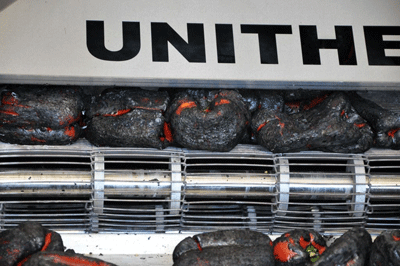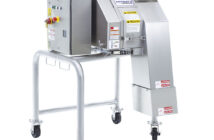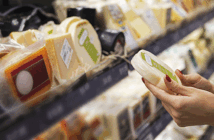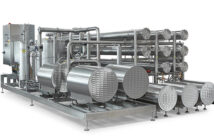The use of advanced inline cooking systems is improving product quality and cooking efficiencies among food processors in Australia – and saving on costs.
In search of enhanced quality, safety and efficiencies, food processors throughout the world are adopting more advanced, sophisticated cooking systems. In Australia, there is more incentive to upgrade these systems – government grants to incorporate added energy efficiencies into plants via the use of innovative technologies and equipment.
“Emphasis on the quality of the food is one of the more noticeable trends in this market, particularly on the retail side,” says Barry Hansell, sales manager at Reactive Engineering (Sydney, Australia), a leading supplier of processing and packaging equipment for medium to large-size processors in the region.
“Ready-to-eat meals sold by retailers are a good example. Ten years ago you’d be hard pressed to find really good quality in frozen meals. But now processors are focusing more on the fresh-prepared meals, which allow for a lot higher quality, and on much greater variety of dishes than we saw in the past.”
There is strong evidence that the move toward improved quality and greater variety is also being driven by the availability of more advanced and flexible cooking systems. Another influence is the Australian government’s grant programmes that support the investigation and implementation of energy efficient projects. Such grants to food processors can help to reduce the payback period of projects, and offset the financial risk of investing in innovative technologies.
“Yield improvement remains important to Australian processors,” Mr Hansell says, “but with newer cooking system designs, they no longer have to sacrifice quality simply to get a bit of extra yield. Today the opportunity exists for them to gain or at least maintain yield while improving on quality and cooking efficiencies.”
Mr Hansell says that, increasingly, his customers are switching over from sometimes unsystematic and more labour-intensive batch cooking to high-efficiency inline processing that improves on quality, consistency, yield, and throughput.
Extended shelf life plus improved taste and appearance are significant among quality improvements, he adds.
According to Mr Hansell, innovations such as spiral ovens and flame grillers are often important components of those inline cooking systems.
Invigorating meat fillings and toppings
Sydney-based Prontier is a market leader in ready-to-eat protein sandwich fillings as well as meats for pizza and salad toppings, and covers all aspects of manufacturing, distribution and retail operations.
“The majority of our business comes from sandwich meats that we cook, slice, and marinate for the lunch trade in the foodservice category,” explains Saxon Joye, Prontier founder and managing director.
Mr Joye adds that his philosophy doesn’t follow a rulebook.
“I grew up in a restaurant kitchen – if you dream it, I’ll find a way to make it,” is his trademark position on sandwich fillings.
This philosophy has led Prontier to a stream of innovations, such as the recent acquisition of a flame grill and spiral oven manufactured by Unitherm Food Systems (Bristow, OK, USA). This equipment enables Prontier to achieve added flavour and a more authentic appearance to its products, plus the improved efficiencies of inline cooking.
The flame grill individually quick-flames products and maximises the effects of flame searing while minimising yield losses. These multiple independently controlled burners and touch screen recipe selection make this unit flexible and efficient.
“We use this equipment to wrap the outside of ready-to-eat items in flames and seal the meat,” Mr Joye explains.
“It also browns meat products such as chicken with a char-grilled stripe, which creates a fabulous presentation. The natural-looking flamed colour and authentic grilled flavour are important advancements to us, they are dramatic improvements in the quality.”
Prontier’s meats are fully cooked in a spiral oven, a highly flexible, small-footprint cooking system developed by Unitherm for processors who want the benefits of continuous cooking with reliable consistency and lower energy usage.
“Now, instead of batch processing we have a ‘production river’, which provides huge labour saving advantages, and gives us real control over the way we finish every individual piece of food, making it a beautiful product,” says Mr Joye.
Spiralling into control
The spiral oven is also a key cooking system at Sydney-based Primo Moraitis Fresh, which manufactures, processes and packages high-quality RTE salads, soups and fresh cut processed vegetables. Primo Moraitis Fresh caters to retail, foodservice, industrial manufacturers and quick service restaurants.
“Before getting this equipment we used little combination ovens and other small cooking devices,” says Ben Watt, general manager.
“When we first looked at the spiral oven, it seemed like a great piece of equipment that could have a lot of potential uses. Which is exactly what it has. We’ve had ours for about 18 months, and we run a whole lot of items through it. We can steam, roast, bake, and super roast (roast and steam). The system is really versatile, so it’s in use almost all the time.”
Among Primo Moraitis Fresh’s principle products are wet salads for gourmet dinners. These include items such as creamy pastas, potato salads, and coleslaw.
“We use a lot of bacon, pancetta and meats like that,” Mr Watt explains.
“So we roast those items through the spiral oven. The continuous process gives us great volume with a very even cook and great consistency.”
Mr Watt says that his spiral oven is also used for steaming potatoes, not only because of the systems’ versatility, but also because of its speed and the fact that the spiral oven does a better job than boiling the potatoes in water. Currently, Primo Moraitis Fresh produces approximately 400kg of steamed potatoes per hour using this system.
Improving efficiency and output
Jewel of India is another Australian-based processor that is using a spiral oven in combination with a spiral chiller to meet its high quality standards and improve yields and other efficiencies.
Jewel of India is a RTE, chilled-meal manufacturer cooking a range of authentic Indian foods including favourites such as chicken, meatballs, ready-to-eat curries (heat and serve), simmer sauces, cocktail and finger foods, and authentic Naan breads. Headquartered in the Sydney area, the company supplies the institutional Australian market including clubs, hospitals, airlines and stadiums, as well as butchers and delis, supermarkets, and caterers that service the military and mining industry.
“The spiral oven is installed in our new highrisk production facility, which will provide us with food safety similar to the newest European and pharmaceutical standards,” says Jim Keating, Jewel of India general manager.
“We will primarily cook chicken on this system. But the system will be able to cook other items that we may adopt in the future. We have done trials on meatballs, moulded lamb balls, chicken balls and fish through the spiral system, and it has proved to be very flexible. The system will allow us to adapt quickly to market changes, so we don’t run the risk of being left behind.”
Although the spiral oven is newly installed, Mr Keating says he expects overall yield improvements to be between 15 and 20 percent. Other important efficiency features the new system will provide include improved throughput, optimised product consistency, and reduced labour.
“Improved cooking quality and efficiencies are very important,” says Mr Keating.
“Today, it’s really about output – it’s no longer all about input – the price of beef or lamb, the price of power, etc. But if you can improve the quality and efficiency within your operation, that is now where your competitive advantage and profits lie.”


























































































